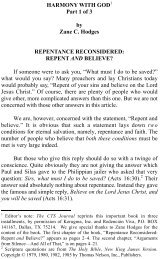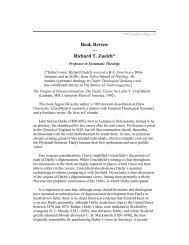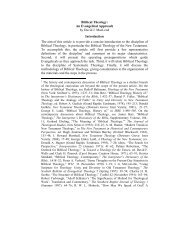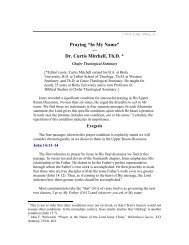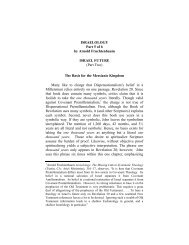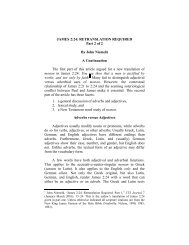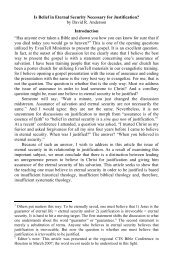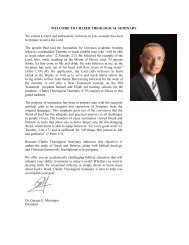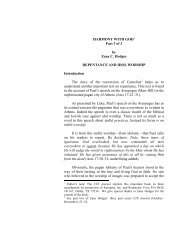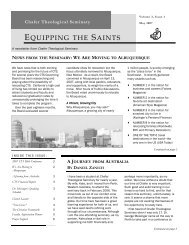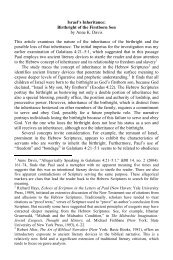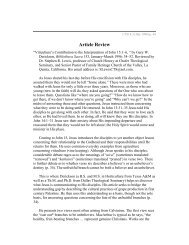ABIDING IN CHRIST - Chafer Theological Seminary
ABIDING IN CHRIST - Chafer Theological Seminary
ABIDING IN CHRIST - Chafer Theological Seminary
Create successful ePaper yourself
Turn your PDF publications into a flip-book with our unique Google optimized e-Paper software.
Abiding in Christ 5<br />
understand 1 John to be discussing fellowship of the believer,<br />
contrasting the carnal believer with the spiritual believer.<br />
Fellowship translates koinwnia, which “denotes<br />
‘participation,’ ‘fellowship,’ esp. with a close bond. It expresses a<br />
two–sided relation . . . As with koinwnew, emphasis may be on<br />
either the giving or the receiving.” 4 John uses this word three times<br />
in the introduction to his first epistle (1 John 1:3, 6, 7). The<br />
emphasis is similar to abide which also describes a two–sided<br />
relationship: the believer abides in Christ, He abides in the believer<br />
(John 15:4–5). In his first epistle the apostle John reveals three<br />
characteristics of fellowship with Christ: 1) Fellowship is based on<br />
a correct view of the undiminished deity and true humanity of our<br />
Lord Jesus Christ (1:1–4); 2) Fellowship with God and walking in<br />
darkness are mutually exclusive (1:5); and 3) Fellowship is<br />
synonymous with walking in the light (1:7). 5<br />
Abiding and fellowship have identical characteristics. The<br />
apostle describes abiding as walking in the same manner as He<br />
walked (2:6) and is in the light (2:10). 6 Surely, Jesus always<br />
walked in the light. The believer who abides does the will of God<br />
(1 John 2:17). Further, abiding is based on believing the message<br />
about Christ that they heard from the beginning (1 John 2:24).<br />
What was from the beginning (1 John 1:1), John proclaimed that<br />
you might have fellowship with us. Abiding in Christ is<br />
tantamount to fellowship with Christ.<br />
The second conclusion derived from the discourse on the vine<br />
is that there are three categories of Christians. The first category<br />
4 Friedrich Hauck, Koinonew, <strong>Theological</strong> Dictionary of the New Testament, ed.<br />
Gerhard Kittel, trans. and ed. Geoffrey W. Bromiley (Grand Rapids: Eerdmans,<br />
1964–74), 3:797.<br />
5<br />
John Niemelä, “Finding True North in 1 John,” CTS Journal 6<br />
(July–September 2000): 39–40, shows why the first person plural of 1 John 1<br />
relates first to John himself, then the apostolic community.<br />
6 Unless otherwise noted all Scripture references are from the New American<br />
Standard Bible (La Habra, CA: Lockman Foundation, 1960, 1962, 1963, 1968,<br />
1971, 1972, 1973, 1977).



